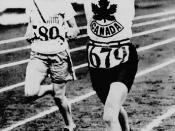In 1999, after projecting the film in the theaters, the audience and many of the critics proclaimed a new era in film making. They were enchanted by its vividness that to some degree creates something which by the majority would be called realism. The aim of this paper is to show how Larry and Andy Wachowski used conventional methods to produce an illusion of reality. The research presented in this essay was inspired by the semiological thought of Christian Metz. Semiology of the cinema tries to describe rules that enable messages in films and the main job of a semiotician is to break film down to codes. A code is "a group of signs all operating according to the same rule of interpretation". (Andrew, Concepts in Film Theory 61) An example of a code is an alphabet in which phonemes are represented by letters. Of course, the codes are just theoretical constructs which enable a scientist to describe signification in films which is "the process by which messages are conveyed to a spectator".
(Andrew, The Major Film Theories 224) The main source of confusion about the nature of cinema stems out of the fact that in this medium the signifiers and their signifieds are inseparable (in contrast to the language in which the distance between the signifiers and signifieds is huge). The case is that semioticians try not to answer what messages are conveyed by the film but how it is done. I claim that the cinematographical codes somehow deconstruct the illusion of realism in The Matrix.
Metz differentiated five channels of conveying information that constitute the raw material of film. These are: 1. multiple, photographic and moving images, 2.graphic traces e.g. all written material read off the screen, 3. recorded speech, 4. recorded music, 5. recorded noise or...


